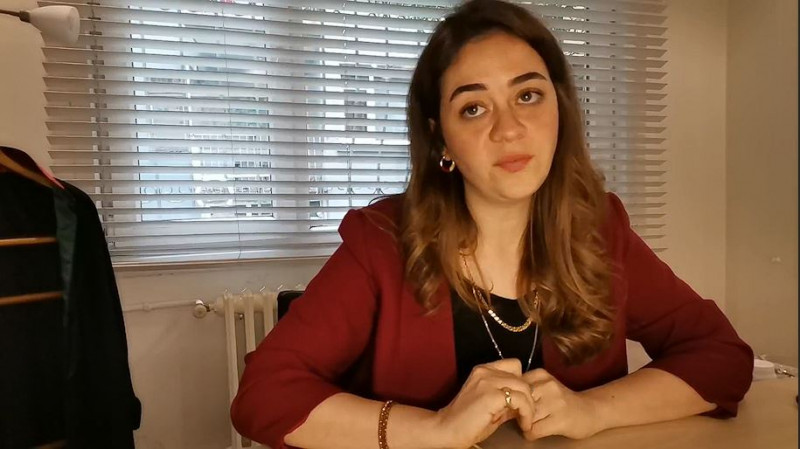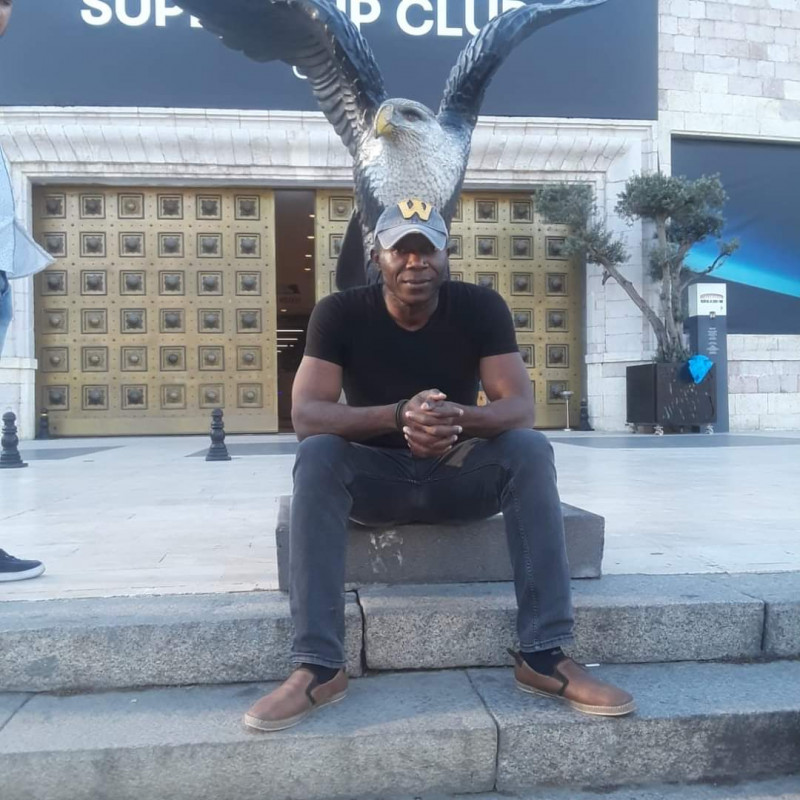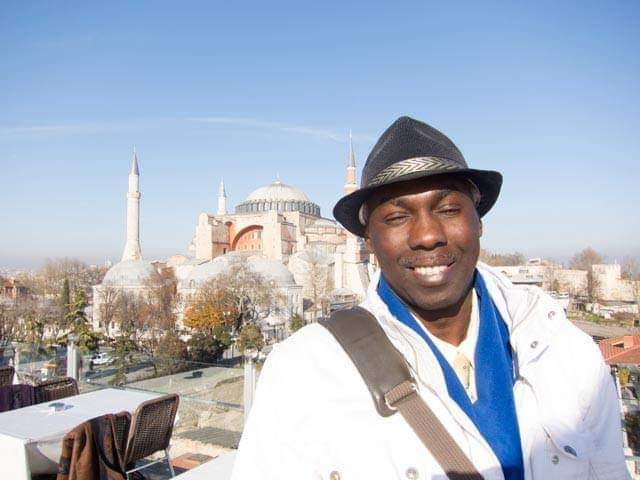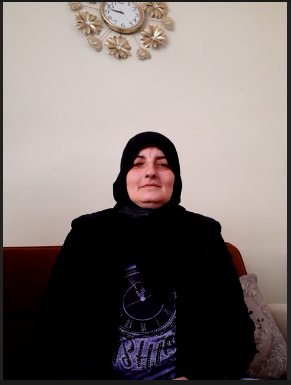Anatolia: A Refuge
Anatolia throughout history has been exposed to several different forms of refugee and migration practices. Since the Byzantine era, Anatolia has hosted many different groups of people who found refuge in there. Anatolia has become gradually Muslimized throughout history along with the migration of dominantly Turkish and Muslim-origin populations. Jewish migration to the Ottoman Empire after their expulsion from Spain and Portugal in 1492 was an exception. The Muslimization of Anatolia became even more visible in the late nineteenth and early twentieth centuries, when the boundaries of the Ottoman Empire were shrinking rapidly. The expulsion of Crimean and Circassian Muslims escaping from the atrocities of the Russian Empire in the second half of the nineteenth century was comparable in terms of size to the migration of Iranians, Turks, Kurds, Bosnians, Kosovars and Syrians escaping the violent conflicts in the Middle East and the Balkans starting in the early 1980s.
The first wave of refugees in contemporary times was from Iran, following the 1979 Revolution. Other major refugee flows were Kurds escaping from Iraq in 1988, which numbered almost 60,000; and in 1991, when half a million people from Iraq found safe refuge in Turkey. In 1989, with Bulgaria’s ‘Revival Process’, which was an assimilation campaign against minorities, almost 310,000 ethnic Turks sought refuge in Turkey. In the following years, during the wars in Bosnia and Herzegovina and Kosovo, Turkey granted asylum to 25,000 Bosnians and 18,000 Kosovars. Turkey has been positioned on the transit route for irregular migrants from Afghanistan, Bangladesh, Iraq, Iran and Pakistan since the 1990s. Turkey is also a destination for human trafficking in the Black Sea region, with victims usually coming from Moldova, Ukraine, the Russian Federation, Kyrgyzstan and Uzbekistan. In the meantime, Turkey has long been a country of destination for immigrants from Eastern Europe and the former Soviet Union, as these new immigrants see Turkey as a gateway to a new job, a new life, and a stepping stone to employment in the West.
Its geographical location has made Turkey a crucial place on irregular migration routes, especially for migrants trying to move to EU countries. Istanbul’s position in the migration process is a unique one and it is becoming an important site, not just for new national settlers, but also for today’s international settlers. Turkey, and especially Istanbul, has become a more complicated site demographically with the new arrivals and other international migrants, mostly originating from the EU countries and elsewhere, especially from Germany, Russia and the Gulf region.
Syrian Refugees in Turkey
Having triggered the worst refugee crisis since World War II, the war in Syria has left almost 12 million people in desperate need of humanitarian aid. There are currently 7.6 million internally displaced persons (IDPs), while around 6 million people have taken refuge in Syria’s immediate neighbourhood: Turkey, Lebanon, Jordan, Iraq and Egypt in 2021. Among these countries, due to its open border policy, Turkey has received the largest number of Syrian refugees, who mostly originate from the Aleppo region in northern Syria. As of 27 May 2021, there are around 3.671.625 Syrians under temporary protection residing in Turkey, and 524.721 of them are settled in Istanbul.
Turkey has a lot of challenges ahead, not only with regard to the integration of refugees. Societal and political polarization of the country has become very evident since the #occupygezi movement of June 2013 and the failed coup of 15 July 2016, and the refugees are also becoming more and more exposed to such divides. There is a growing popular resentment against the Syrian refugees, which has become even more detectable after the Turkish government explicitly announced in the summer of 2016 that a number of Syrian refugees be granted Turkish citizenship. So far, it is reported that around 140.000 Syrians were granted Turkish citizenship. The level of popular resentment increases even more in the Southeast Anatolia among the Kurdish and Alevi origin local populations due to the rumours that the government is becoming more likely to demographically instrumentalize Sunni-Muslim-Arabs to counter balance the ethno-nationalist and centrifugal claims of the Kurds.
Syrians in Istanbul and Cultural Intimacy
How do the Syrian refuges cope with the difficulties they come across in everyday life in Istanbul? Syrians living in Turkey in general, and in Istanbul in particular, have not only chosen Turkey as a refuge because of its geographical proximity, but also because of its cultural intimacy stemming from the common Ottoman past. Referring to the findings of various episodes of field research held in Istanbul in late 2015, early 2016, and the Summer of 2018, the short piece will display to what extent Istanbul provides Syrian refugees with a comfort zone, or a space of cultural intimacy, where they feel safe and secure despite the difficulties of everyday life.
Border cities such as Gaziantep, Hatay and Kilis have a large number of Syrians in proportion to their native populations, and have struggled to cope with the burgeoning needs, given the very limited assistance from central government. Despite financial hardship, they have managed to handle mass migration and achieve peaceful forms of togetherness of their native and Syrian communities, who fortunately share similar cultures. Social Networks Theory in Migration Studies, which holds that migrants follow social, cultural, religious and economic networks between their homeland and their place of destination. While the points of entry to, and initial destinations in Turkey for most Syrians are border cities such as Şanlıurfa, Hatay, Gaziantep and Kilis, many have subsequently migrated to other cities including Istanbul, Adana, Mersin, Bursa and İzmir. Most Syrians coming to İstanbul indicate that they did so based on existing family and kinship connections in certain neighborhoods of Istanbul. These neighborhoods are also preferred due to the job opportunities they offer, often facilitated by these social networks.
Michael Herzfeld’s notion of cultural intimacy includes various acts and attitudes repeated by members of a group of people, which lead to the formation of a dualistic understanding of the world divided between “us” and “them.” These acts and attitudes may range from essentializating culture and the past, practicing various stereotypes in everyday life and performing persuasive acts of resemblances and different forms of iconicity such as mythical, visual, musical and gastronomic images that bridge resemblances with the other members of the group at large.
Here, the term is used in its original sense: Syrians are being observed as they are essentializing Turkey and asserting intimacy with Turkey’s cultural and national milieu while claiming to disapprove of, or to feel excluded from Europe’s cultural, religions and national spaces.
Since the early days of mass migration to Turkey, it has been reported that Syrian refugees residing in Istanbul at large, and in conservative neighbourhoods in particular, have constructed bridges between themselves and the members of the majority society by means of visual, musical, religious, gastronomic, and even linguistic iconicities, which create a space of intimacy. This piece expands upon these accounts and details how Syrian refugees nevertheless cultivated cultural intimacy with their neighbourhoods in Istanbul through asserting their similarity and belongingness. Syrians in Istanbul build this cultural intimacy also by asserting difference from Europeans.
Following the social networks
The Network Theory is one of those theories that try to provide an empirical explanation of migration motives. Networks can be regarded as one of the main reasons of migration which serve as strong ties between migrants and potential migrants. These connections often become a social formation, which helps potential migrants as well as new migrants find their ways in the society where the old migrants have already established their lives. There are three types of networks: family networks, labour networks and “illegal” migrant networks.
It should be highlighted that networks, as one of the significant reasons for migration, have become more evident and useful as the internet has become more accessible to the wider society.
Thanks to the growing visibility of the internet in everyday life, refugees have been utilizing such networks to decide about their routes. Istanbul, as one of the most cosmopolitan cities in the world, certainly provides migrants and refugees with such a viable option to settle.
Istanbul is safe despite everything!
In 2016, when refugees were asked about how safe they feel in Istanbul, the majority have expressed feelings of safety (91.8 percent) while only 6.8 percent stated an uneasiness regarding safety in the city. Being away from the war zone and everyday terrors of violence in Aleppo, coupled with cultural intimacy and religious familiarity, have been reported as the main determinants of a feeling of safety and comfort for refugees in Istanbul, although women tend to feel slightly more in the extremes in terms of safety and insecurity in the city compared to Syrian men, who are in the more moderate to safe range of the spectrum. Mohammad, a 27-year-old male whom we have interviewed in Ümraniye explained his reason of picking up Istanbul to live in the following words:
“I came here two years ago through the Turkish-Syrian border. I had to pay a lot of money to the smugglers. Turkey was my first choice, because there is better treatment here compared to other neighbouring countries in the region. And I feel safe here in Istanbul.”
Similarly, Abo Bashar, a 55-year-old male residing in Ümraniye, has drawn our attention to the difficulties of living in a city like Istanbul, though he has added that he is happy there:
“I am happier here though it’s hard. Because the treatment here is better than it is in the other countries. I am not planning to travel to any other country, but will go back to Syria one day. We wish that we had a work permit, and that the employers paid us a better salary. We don’t want to work under such conditions. We wished people here would treat us better and give us more assistance because we receive nothing. And we wished the landlords would go easy on us and take from us what the contract says they must take.”
The results of the survey conducted by our research team in 2015 and 2016 have shown that the primary rationale behind moving to Istanbul is to find a job (54.8 percent). The second most expressed reason in those days was to follow existing social networks such as family ties, relational links and other relevant social, ethno-cultural and religious networks. The third reason for refugees to settle in Istanbul was the feeling of security and safety. Marwa, a 28-year-old female living in the Sultanbeyli district on the Asian side of Istanbul, uttered her feelings about Istanbul with the following words:
“I feel safe here in Istanbul, and I don’t want to go back to Aleppo where we were moving from house to house due to the war. I want to stay here in Turkey, because it is similar to our traditions and culture, and my family is here. I don’t want to go to Europe either, because I have no one there. And I don’t want to go back to Syria at all, because I lost my husband there.”
What attracts her to Istanbul is the cultural intimacy that the city offers as well as familial links already existing there. Marwa was one of the Sunni-Muslim-Arabs who constitute the majority of Syrians residing in Istanbul. There are some other districts of Istanbul such as Şişli that are popular destinations for Syrians with Kurdish and/or Alevi backgrounds. Such districts seem to provide them with comfort and cultural as those districts are populated by their co-ethnic inhabitants such as Turkish citizens with Kurdish and/or Alevi background. Hence, class, ethnicity, culture, faith and gender play an important role for Syrian refugees in selecting their places of settlement.
The ways in which the host communities perceive the Syrian refugees is also a very important factor in shaping this decision.
Majority of the local residents in Istanbul have been supportive of the rhetoric of Ansar Spirit reified by the state actors in general and the government in particular until 2019 local elections in May when the ruling party, Justice and Development Party (AKP) lost the big cities to the social democratic and liberal parties (CHP and İyiParti). İstanbul was one of those cities that the AKP lost. The Ansar Spirit has been embraced by the pious Muslim Turkish citizens who perceive the Arabs and the Arabic language they speak as sacred. The fact that Prophet Mohammad was of Arab origin, and the language of Quran is Arabic makes a lot of sense for the pious Muslims in Turkey as well as in other non-Arabic geographies of Islam. The members of the local communities in the six districts of Istanbul run by the municipalities of the Justice and Development Party have often referred to the cultural and religious intimacy which they have practiced in everyday life with the Sunni-Arabs coming from Syria. Hence, religious and linguistic affinity are not only instrumentalized by the Sunni-Muslim-Syrian refugees, but also by the members of the Sunni-Muslim local communities who have already reified the language and the ethnicity of the Sunni Arabs.
Cultural Intimacy in Istanbul: Culture, Religion and Gender
In many migrant narratives during our interviews conducted in Istanbul in the summer of 2018, we found a construction of cultural intimacy with culture, religion and gender being closely linked together and Syrian and Turkish cultures posited as similar in opposition to supposedly dissimilar Europe, which is sometimes said to be hostile to Muslim migrants. For example, 29-year old Mona explained that she wanted to stay in Turkey because of “the culture and the religion. Here it is easier to live of course.” She related that she felt more comfortable dressing in a conservative, religious style in Turkey than she had in Syria. But, she was worried that she would be forced to leave for Europe because her husband, working in the furniture industry, was often working without pay and her own dreams of obtaining a Master’s degree seemed out of reach because her educational certificates and transcripts were not recognized by the Turkish government. She explained, “while the situation is bad like this, we are thinking of leaving. If the situation becomes a bit better, we will remove that idea from our minds.” Seven months later, she resolved her bureaucratic issues, was accepted into a doctoral program at a Turkish university and related that she decided to definitely stay in Turkey. A rational choice based on economic realities might have decided her migration trajectory, but she struggled to stay in Turkey where she felt comfortable due to its religious and cultural milieu.
Shared religious belief and practice is among the main reasons that refugees give for wanting to stay in Istanbul. For example, one 36-year old housewife from Aleppo, Abeer, explained, “I don’t want to go to Europe at all. We had a chance to go to Germany, but it is impossible. Everywhere would be foreign there. At least here in Turkey, there is Islam, I hear the sound of the call to prayer.”
This kind of cultural and religious affinity is not only limited to religious and linguistic levels, but also to gastronomic and musical tastes of both sides. The number of Syrian restaurants is rapidly increasing in Istanbul, not only in Fatih and Esenyurt, but also in the touristic centres of the city such as Beyoğlu and Sultanahmet. These restaurants do not only attract the Arabs who feel a kind of cultural intimacy with the food and beverages they serve, but also the locals of Istanbul who feel a similar cultural intimacy with the Arabic cuisine, which has always been an essential part of the cosmopolitan Ottoman cuisine. Similarly, the number of Syrian street music bands has also increased in the city centre, prior to the Covid-19 pandemic. Radio stations such as Al-Kol, Muftah and Alwan were established in Istanbul to broadcast not only to the Syrian Diaspora in Turkey but also to the homeland in Syria. The sound of Arabic music echoing in the streets of Istanbul as well as in the Arabic radio stations construct new bridges between the Syrian refugees and the members of the local communities who are somehow appealed to it by virtue of resemblance with the popular Turkish Arabesque music.
Growing Majoritarian Turkish Nationalism
However, some locals do not seem to be so much at ease with the Ansar Spirit. Treating the Syrians as “traitors” seems to be a common phenomenon among many Turks. One of the Turkish youngsters we interviewed in the Sultanbeyli district of Istanbul, expressed his dislike against the Syrian refugees settled in his neighbourhood with the following words:
“Everyone around me hates the Syrians. People are curious to know why the Syrians came to Turkey. If I were them I wouldn’t leave my country. I would stay home and fight back against the enemy to protect my homeland. Syrians are coward, that is why they left their country. They are traitors. Our country has accepted them as no one else is really accepting them. We are treating them well, but we are not getting anything good in return (20, male, 16 November 2015, Sultanbeyli).”
This kind of discourse has also become rather prevalent, especially after a popular conservative-pious-Muslim poet, İsmet Özel, treated the Syrian refugees in the same way as “traitors”. Defining the Arabs as traitors in Turkey is actually a rather old habit dating back to the dissolution of the Ottoman Empire in the late 19th century and early 20th century. Turkish nationalists perceived the Arabs in those days as “traitors” since they believed that the Arab nationalists stabbed the Turks on their back by collaborating with the imperialist western forces. Such a stereotype is still very strong in collective memory of the Turkish citizens.
Even though he claimed that cultural and religious similarities were his primary motivation for remaining in Istanbul, Hamza also pointed out the importance of the closed migration route to Europe for some migrants. 21-year old Nabeel related that he felt the necessity of working, rather than relying on government support, was an advantage of living in Turkey.
“If someone is living legally and paying taxes, no one can feel that he is helping him. He can defend himself and reply to people when criticized. But in Germany, for example, people would say, ‘we are paying our taxes in order to make you live for free,’ and he can’t say, ‘no, this is not true.’ Also, the community here is supportive, if you meet Muslim Turkish people, they will support you for being a Muslim.”
Nabeel even said that he would consider travelling to Germany for work or study, but he would not want to go as a refugee. Importantly, both Hamza and Nabeel are young men who have found employment and are financially stable in Istanbul. But, a feeling that they are valued and belong in Turkey (despite any racism they experience) also matters and is positioned as opposite to how they think they would be treated in Europe.
The positive interlinking of Syrian and Turkish cultures, religious practice and gender norms is based on shared historical experiences and observations of Turkish society. But, it must also be seen as a constructed intimacy, a process of stereotyping and essentializing both Turkish and European cultures while asserting their belonging in the former. Both Europe and Turkey are multifaceted and culturally diverse. Actually, several religious and cultural debates have emerged between Syrians and Turks, for example, surrounding Qur’anic education and proper recitation or the practice of polygamy and early marriage, which is much more accepted and widespread in Syria than in Turkey. By simplifying Turkey and Europe into “culturally similar or culturally different,” “Muslim/non-Muslim,” and “safe or not safe for women,” they place themselves in cultural spaces.
Exhaustion of Cultural Intimacy Discourse
Since the beginning of the migration of Syrian refugees to Turkey, the cultural intimacy discourse has played a very important role in the reception of Syrian refugees by the local communities in Turkey. As stated above, the political discourses of Ansar spirit were successfully formed and displayed by the AKP leadership to Syrian refugees have mostly made the Syrians to be relatively content with their residence in Turkey. However, after ten years of mass migration of Syrians, the political discourse of cultural intimacy is not really socially reciprocated by the majority of the Turkish citizens any longer. Recent studies reveal that ethno-cultural, religious and historical ties between most of the Syrians and native Turkish citizens have been reported by the Syrian interlocutors to be the main source of comfort for their stay in Turkey. This is what Michael Herzfeld calls cultural intimacy, which is a kind of reassurance for Syrian refugees to stay in Turkey despite social-economic difficulties, deprivation of rights, exclusion and exploitation in the labour market as well as in everyday life.
It seems that such cultural intimacy has prevented most of the Syrians from generating a willingness to go to Europe, at least until recently. The qualitative and quantitative study that we conducted in Istanbul in 2015 and 2016 revealed that only 1,6 per cent of the interviewed Syrians are willing to go to Europe, while 79 percent expressed their willingness to go back, and around 20 per cent stated their willingness to stay in Turkey when the war is over. Similarly, another quantitative study conducted in 2017 also revealed a similar tendency among the Syrian refugees surveyed in Gaziantep, Urfa, Hatay and Istanbul. In their survey, it was around 5 per cent who were willing to go to Europe. Their hesitation to go to Europe can be explained through various factors: cultural intimacy with Turkey, ethnic and religious affinity with the natives in Turkey, most of the Syrians being Sunni-Muslim-Arab who have communal, religious and ethnic ties in Turkey (especially in the Southeast Turkey as well as in Istanbul), growing anti-refugee sentiments, Islamophobia and right-wing populism in Europe, the absence of safe passage to Europe, obvious risks at sea, economic burden of the journey, and the news with regards to the deadly journeys circulated in the social and mainstream media.
Conclusion
Latest data indicate that tolerance threshold of the Syrians to stay in Istanbul and elsewhere in Turkey is no longer that high. The survey conducted by a group of scholars working with us in the Horizon 2020 Project in 2019 finds that 52 % of the Syrian respondents in Istanbul were ready to move further towards Europe if only there was a chance. The survey was conducted with 750 Syrians residing in İstanbul, İzmir, Şanlıurfa and Batman. This representative survey reveals that Syrians are becoming less likely to stand all kinds of socio-economic problems, unemployment, exploitation, intersectional forms of discrimination, societal and political polarisation, and the ramifications of growing Turkish nationalism in everyday life. Hence, one could conclude that cultural intimacy discourse which was already disowned by the majority of the Turkish society, is now also being disowned by a growing number of Syrians in Istanbul and elsewhere in Turkey.
Ayhan Kaya is a professor of political science at İstanbul Bilgi University.







